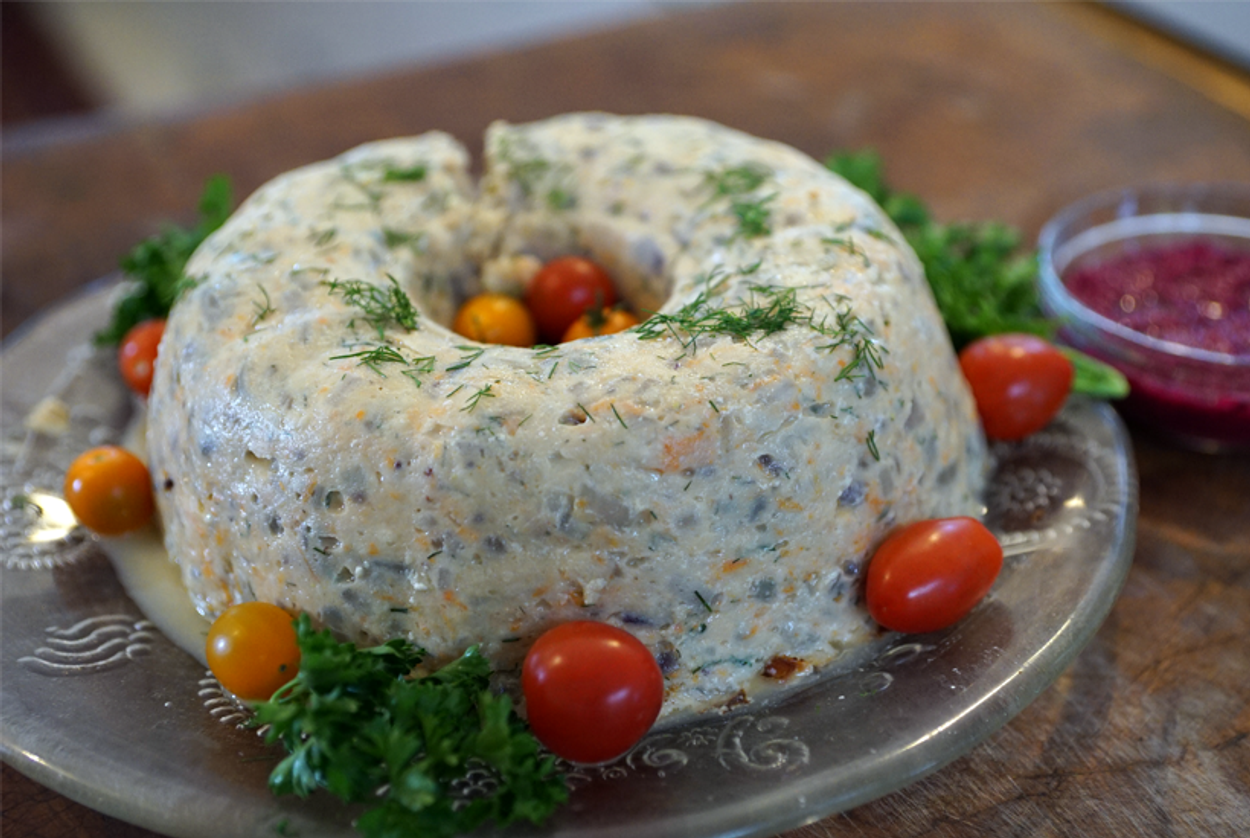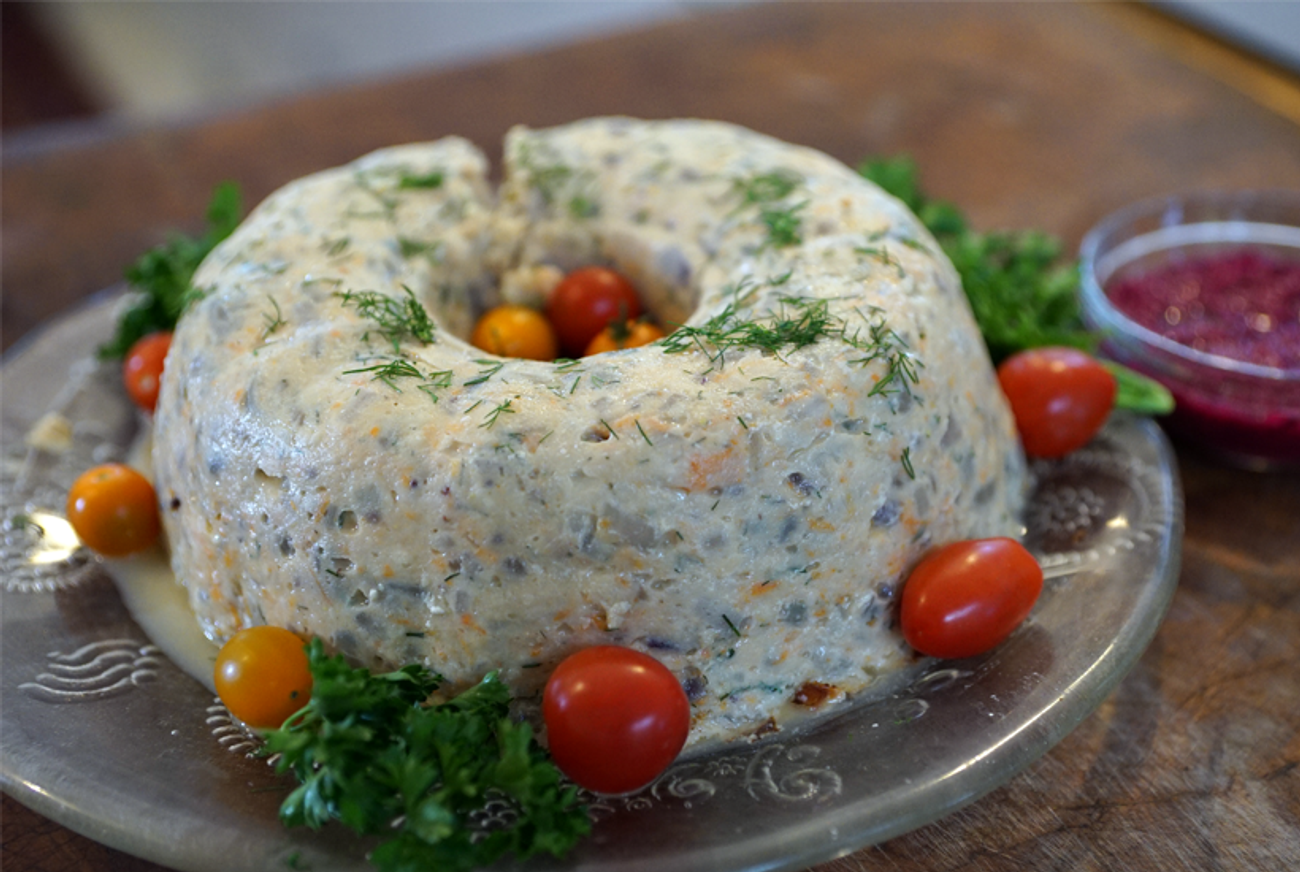How To Make Gefilte Fish That Your Guests Will Actually Want To Eat
Throw away your jars of gray fish patties. This Rosh Hashanah, make a terrine that’ll have doubters asking for seconds.




I make homemade gefilte fish twice a year: Passover and Rosh Hashanah. Before Passover, at what we call a “gefilte-in,” friends assemble in my kitchen with their own pots, fish, carrots, eggs, and matzo meal to make old-fashioned gefilte fish patties. For Rosh Hashanah, I make a light, circular fish terrine that looks beautiful and has the components of gefilte fish, but is very easy to make.
Fish has always been a mainstay of the Jewish diet, and fish balls, a precursor to gefilte fish, can be traced backed to the Middle Ages in Spain, and possibly earlier to the Middle East. When Jews migrated to Eastern Europe after their expulsion from Spain, they continued the tradition. Using the flesh of large, fresh-water kosher fish, cooks added onions, garlic, a little egg, and matzo meal and stuffed the filling into the skin of the fish, poaching and sometimes baking it. On the Sabbath, it was, of course, served cold.
As the dish crossed Europe with emigrants fleeing pogroms in the late 19th century, the elaborate procedure of stuffing it back in the skin (thus the name gefilte, meaning filled or stuffed) became easier: You just wrapped a piece of skin around a fish ball and poached it. By the time gefilte fish crossed the Atlantic, the skin was gone completely.
You can buy it today in jars or cans, but I prefer my homemade version (recipe here), with dill and mustard, and poached in a Bundt pan. Turned out on a platter and featured as one of many foods on my Rosh Hashanah lunch buffet, it is always a big success. Even those who swear they would “never eat gefilte fish” come back for seconds.
Joan Nathan is Tablet Magazine’s food columnist and the author of 10 cookbooks including King Solomon’s Table: a Culinary Exploration of Jewish Cooking from Around the World.